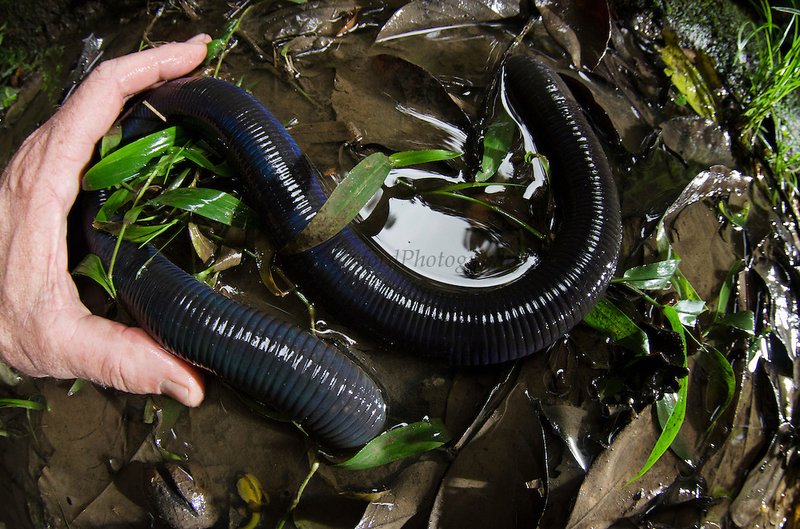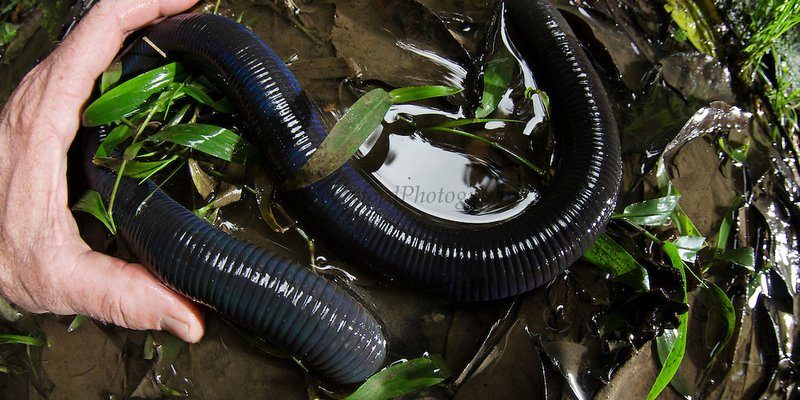
Living mostly in the rich soils of the Palouse region in Washington State, this worm plays a crucial role in maintaining soil structure and fertility. It can grow up to three feet long—yes, that’s right!—and has a unique ability to thrive in specific conditions. Its presence indicates a thriving ecosystem, like a canary in a coal mine. But what exactly does the giant Palouse earthworm do, and why should we care? In this article, let’s dig deeper into its significance in both soil and aquatic ecosystems.
What Is the Giant Palouse Earthworm?
The giant Palouse earthworm, scientifically known as *Driloleirus americanus*, is one of the largest earthworm species in the world. It was first discovered in the late 19th century, but despite its size, many people have never seen one. They live deep underground, which can make them hard to find. Honestly, unless you’re digging around in the Palouse region, you might not get the chance to meet one face to face.
These worms prefer specific environments, typically found in the nutrient-rich soils of the Palouse Prairie. They thrive in loose, moist soil, which allows them to move easily and feed on organic matter. One interesting fact about the giant Palouse earthworm is that it can live for several years, with some estimates suggesting they can even reach up to 15 years old! The longer they live, the more they contribute to soil health.
Why Are Earthworms Important for Soil Health?
So, let’s talk about why earthworms, and particularly the giant Palouse earthworm, are essential for healthy soil. To put it simply, if soil were a community, earthworms would be the dedicated builders and maintainers. They play several critical roles in the soil ecosystem:
- Soil Aeration: As these worms burrow through the ground, they create channels that increase air circulation and water infiltration. This is vital for plant roots, allowing them to access nutrients and moisture more easily.
- Organic Matter Breakdown: Earthworms consume dead plant material, turning it into rich compost-like material called castings. This process not only recycles nutrients but also enhances soil fertility.
- Microbial Activity: Their presence influences the microbial population in the soil. Earthworms help to create a balanced ecosystem for bacteria and fungi, which are essential for breaking down organic material and nutrient cycling.
Without earthworms like the giant Palouse worm, our soil would struggle to support plant life. Just think about it—without healthy soil, we wouldn’t have thriving crops, beautiful gardens, or lush landscapes. It’s like trying to cook a meal without any ingredients; it just wouldn’t work!
The Role of Giant Palouse Earthworm in Aquatic Ecosystems
Now, you might be wondering how a creature that spends most of its life underground could relate to aquatic ecosystems. Well, the connection between soil health and water systems is stronger than you might think. Healthy soil can lead to clearer streams and rivers, affecting the entire food web.
When rain falls on healthy soil, it can seep into the ground instead of running off. This process filters contaminants and nutrients, which can improve water quality in nearby rivers and lakes. The giant Palouse earthworm contributes to this filtering process by maintaining soil structure and stability. By helping to prevent erosion and runoff, these worms indirectly promote healthier aquatic ecosystems.
Moreover, the nutrients released from the castings of the giant Palouse earthworm can enrich nearby water bodies. This can support plant growth in the water, providing food for fish and other aquatic life. So you see, even though they live underground, their impact ripples through the entire ecosystem.
Conservation and Threats to the Giant Palouse Earthworm
Despite their importance, the giant Palouse earthworm faces a number of threats. Urban development, agricultural practices, and habitat destruction have significantly reduced their population. The Palouse region is increasingly being converted for farming, which disrupts their natural habitat.
Conservation efforts are underway to protect these unique worms and their environment. Here’s the thing: preserving the habitat not only ensures the survival of the giant Palouse earthworm but also supports the overall health of our ecosystems. That’s a win-win for both these remarkable creatures and the soil and water systems they help maintain.
Educating the public about the significance of the giant Palouse earthworm is also crucial. Awareness campaigns can encourage more sustainable land use practices among farmers and landowners.
How You Can Help Protect the Giant Palouse Earthworm
You might be wondering how you can contribute to the conservation of the giant Palouse earthworm and its habitat. Here are a few simple ways:
- Support Sustainable Agriculture: Choose to buy from local farms that practice sustainable farming methods. This helps protect the soil and the organisms living in it.
- Get Involved: Join local conservation groups or volunteer for projects that focus on habitat restoration in your area.
- Spread the Word: Talk about the giant Palouse earthworm and its significance. The more people know, the more support there will be for conservation efforts!
By taking these small steps, you’re contributing to a larger movement aimed at protecting not just the giant Palouse earthworm, but our environment as a whole.
The Bigger Picture: Why Soil Ecosystems Matter
Understanding the role of the giant Palouse earthworm is part of a bigger conversation about soil health. Our planet relies on healthy soil to grow food, filter water, and support biodiversity. Here’s the thing: healthy ecosystems are interconnected. When we protect one part, like the giant Palouse earthworm, we’re also helping countless other species and the environment overall.
As we face global challenges like climate change and habitat loss, every little bit counts. By prioritizing soil health and supporting species like the giant Palouse earthworm, we’re taking steps toward a more sustainable future. So next time you think about earthworms, remember that they hold a vital piece of our planet’s puzzle.
In conclusion, the giant Palouse earthworm might just be a worm, but it plays a giant role in our ecosystems. It’s a reminder of how interconnected life is and how important our soil and waters are to our survival. By learning about and protecting these worms, we’re not just saving a species; we’re nurturing the very foundation of life on Earth. Let’s keep the conversation going and advocate for a healthier planet!

